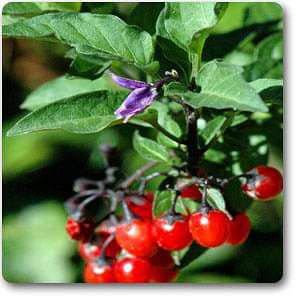
Solanum dulcamara - Plant
(MRP Inclusive of all taxes)
- Shipping ₹79 for entire order
- Dispatch in 7 days
- Country of origin: India

(MRP Inclusive of all taxes)
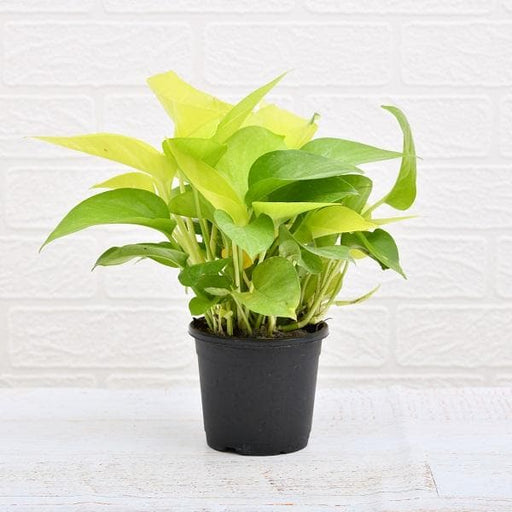 Save 29%
Save 29%
Air Purifier Money Plant with Pot The Air Purifier Money Plant, also known as Pothos or Epipremnum aureum, is a stunning indoor plant that...
View full details
 Save up to 15%
Save up to 15%
Peace Lily, Spathiphyllum - Plant The Peace Lily, scientifically known as Spathiphyllum, is a stunning houseplant celebrated for its elegant white...
View full details
 Save 25%
Save 25%
Jasminum sambac, Mogra, Arabian Jasmine - Plant Jasminum sambac, commonly known as Mogra or Arabian Jasmine, is a fragrant flowering plant...
View full details
 Save 18%
Save 18%
Combo Constituents Includes the Parijat Tree (Night-Flowering Jasmine), a culturally significant plant with fragrant flowers. Description The Pari...
View full details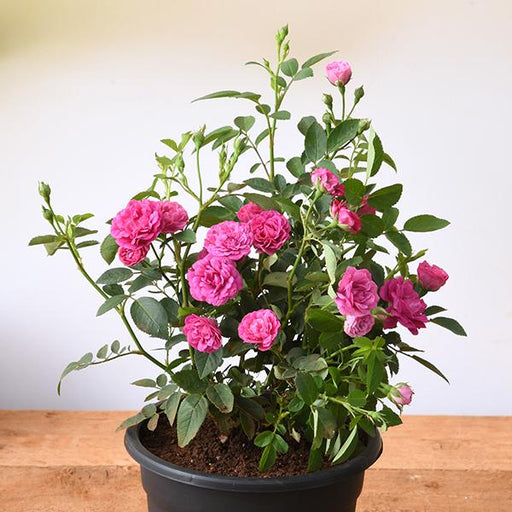
 Save 25%
Save 25%
Miniature Rose, Button Rose (Any Color) - Plant The Miniature Rose, also known as the Button Rose, is a charming and compact flowering plant that ...
View full details Save 25%
Save 25%
Damascus Rose, Scented Rose (Any Color) - Plant The Damascus Rose, also known as Rosa damascena, is a timeless symbol of beauty and romanc...
View full details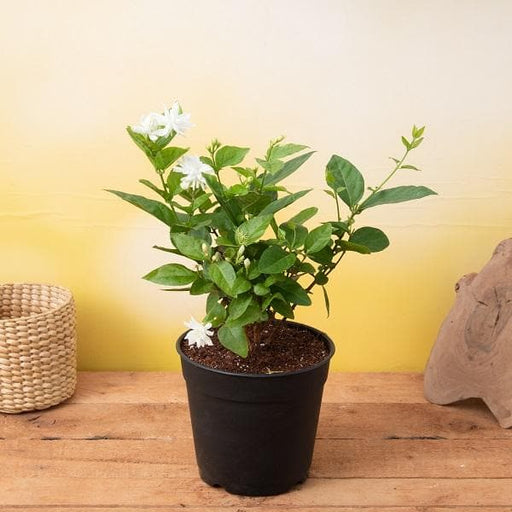
 Save 17%
Save 17%
Beautiful Fragrant Mogra, Arabian Jasmine Plant with Pot The Beautiful Fragrant Mogra, also known as Arabian Jasmine (Jasminum sambac), is...
View full details Save 15%
Save 15%
Pack of Vermicompost and Neem Cake for House Plants Transform your indoor garden with our premium Pack of Vermicompost and Neem Cake, spec...
View full details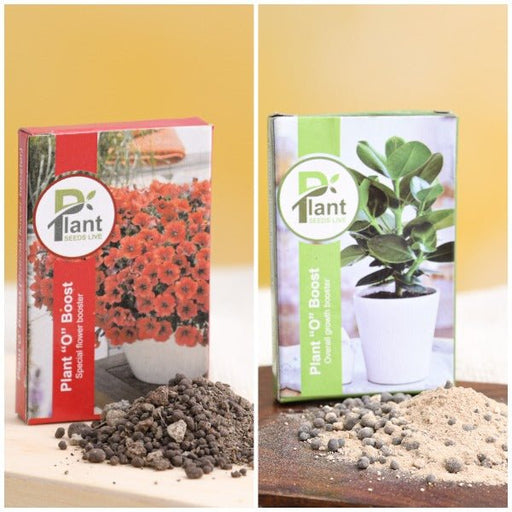
Pack of Plant Growth and Flower Boosters Unlock the full potential of your garden with our Pack of Plant Growth and Flower Boosters! This ...
View full details Save 38%
Save 38%
Combo of Jeevamrut and Neem Raksha for Easy Growth and Protection of Houseplants Transform your indoor garden with our exclusive combo of ...
View full details Save 22%
Save 22%
Plant Nutrients Kit (Pack of 16) for a Healthy Garden Transform your garden into a lush paradise with our Plant Nutrients Kit, featuring 1...
View full details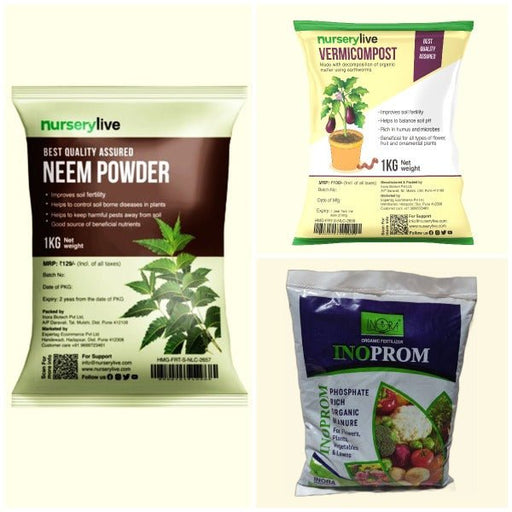 Save 16%
Save 16%
Combo of Top Plant Fertilizers Elevate your gardening game with our exclusive Combo of Top Plant Fertilizers, featuring two bags of premiu...
View full details Save 24%
Save 24%
Pack of 4 Additives to Make Soil Healthy and Nutrient Rich Transform your garden into a thriving ecosystem with our Pack of 4 Additives de...
View full details Save 30%
Save 30%
Transform your gardening experience with our premium Combo of Perlite and Vermiculite. This unique blend is designed to enhance soil aeration and ...
View full details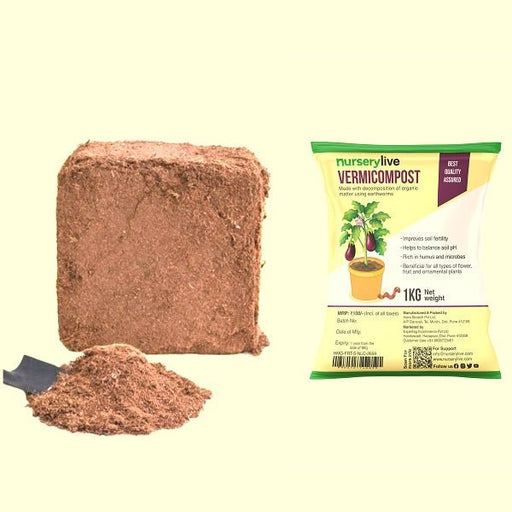 Save 27%
Save 27%
Combo of 2 Vermicompost and Cocopeat - Enrich Your Soil Naturally! Transform your garden into a thriving ecosystem with our Combo of 2 Ver...
View full details
 Save 35%
Save 35%
Best 6 Plants for Perfect Indoor Garden Transform your living space into a lush oasis with our curated collection of the Best 6 Plants for a...
View full details
 Save up to 50%
Save up to 50%
Mini Succulent Garden Pack Transform your space with our Mini Succulent Garden Pack, featuring a delightful collection of 4 any variety beautiful s...
View full details
 Save 30%
Save 30%
5 Best Fragrant Plants Transform your garden or indoor space into a fragrant paradise with our curated selection of the 5 Best Fragrant Plants. Th...
View full details
 Save 24%
Save 24%
Set of 2 Bonsai Looking Grafted Adeniums Transform your indoor or outdoor space with our exquisite Set of 2 Bonsai Looking Grafted Adenium...
View full details Save 45%
Save 45%
Top 4 Die Hard Succulents Pack Transform your indoor or outdoor space with our Top 4 Die Hard Succulents Pack, featuring a curated selecti...
View full details
 Save 30%
Save 30%
5 Best Indoor Plants Pack Transform your living space into a lush oasis with our '5 Best Indoor Plants Pack.' This carefully curated collection fe...
View full details
 Save 25%
Save 25%
Set of 4 Evergreen Air Purifier Plant Pack Transform your indoor space into a lush, green oasis with our Set of 4 Evergreen Air Purifier Pla...
View full details| SrNo | Item Name |
|---|---|
| 1 | Solanum dulcamara - Plant |
Solanum dulcamara, commonly known as Bittersweet Nightshade, is a perennial climbing plant belonging to the Solanaceae family. This captivating species is native to Europe and Asia but has spread to North America, where it thrives in moist, shaded areas. With its striking purple flowers and vibrant red berries, Solanum dulcamara is not only visually appealing but also rich in historical significance and ecological value.
What makes Solanum dulcamara special is its dual nature; while it is admired for its ornamental beauty, it also possesses medicinal properties. Historically, it has been used in traditional medicine to treat various ailments, showcasing its importance in herbal practices. Its ability to adapt to different environments makes it a resilient choice for gardeners and nature enthusiasts alike.
One of the standout features of Solanum dulcamara is its ability to attract pollinators, contributing positively to local ecosystems. The plant's berries, although toxic to humans, serve as a food source for birds, playing a crucial role in the food web. This unique characteristic highlights the plant's ecological importance while reminding us of the delicate balance within nature.
Ah, the wonders of Solanum dulcamara! This plant, often dubbed the bittersweet nightshade, is not just a pretty face. It boasts a plethora of benefits, from its traditional medicinal uses to its role in supporting local ecosystems. Imagine a plant that can help with ailments like respiratory issues and skin conditions while also providing a feast for pollinators. Talk about multitasking! With its vibrant purple flowers and glossy berries, it’s like the overachiever of the plant world, making your garden not just beautiful but also beneficial.
Caring for Solanum dulcamara is like nurturing a rebellious teenager. It thrives in well-drained soil and loves a good sunbath, but don’t let it get too dry or too soggy—balance is key! Pruning is essential to keep it in check, as it can get a bit wild, much like that one friend who can’t stop talking at parties. Regular watering and occasional fertilization will keep it happy and healthy, ensuring it continues to charm your garden with its vibrant presence.
Beware, dear gardener! While Solanum dulcamara may look inviting with its colorful berries, it’s not all sunshine and rainbows. This plant is toxic if ingested, especially the berries, which can be quite tempting for curious little hands. Think of it as the plant equivalent of a candy with a warning label—deliciously dangerous! Keep it out of reach of children and pets, and you’ll avoid any unfortunate mishaps. Just admire its beauty from a safe distance, and let it be the star of your garden without the drama.
Propagating Solanum dulcamara is like playing plant matchmaker. You can do it through seeds or cuttings, and both methods have their charm. Seeds require a bit of patience, as they need to be sown in spring and kept warm. On the other hand, cuttings are like the quick and easy date—just snip a healthy stem, pop it in water, and watch it grow roots. Either way, you’ll end up with more of this delightful plant to share (or keep all to yourself, we won’t judge).
Solanum dulcamara is a plant that knows how to pick its spots. It thrives in moist, well-drained areas, often found near water bodies or in disturbed sites. Think of it as the adventurous type, always seeking out the best hangout spots. Whether it’s along riverbanks or in your backyard, this plant loves to make itself at home. Just make sure it has enough space to spread its wings (or vines) and it’ll reward you with its stunning foliage and flowers.
The uses of Solanum dulcamara are as varied as a buffet table at a family reunion. Traditionally, it has been used in herbal medicine for its anti-inflammatory and analgesic properties. It’s like that one relative who always has a remedy for everything! Beyond medicinal uses, it can also serve as a natural fence, thanks to its sprawling growth. Plus, its berries can attract birds, making it a great addition to any wildlife-friendly garden. Who knew a plant could be so versatile?
Every plant has its enemies, and Solanum dulcamara is no exception. Common pests like aphids and spider mites can be a nuisance, much like that one neighbor who borrows your lawnmower and never returns it. Regular inspections and a good spray of insecticidal soap can keep these pests at bay. Think of it as giving your plant a spa day—refreshing and rejuvenating! With a little vigilance, you can ensure your Solanum dulcamara remains the belle of the botanical ball.
If you’re looking for a fast-growing companion, Solanum dulcamara is your plant! It’s like the overachiever in school, always racing ahead. Under the right conditions, it can grow several feet in a single season, making it a great choice for quick coverage in your garden. Just be prepared to keep it in check, as it can get a bit too enthusiastic. With a little pruning and guidance, you’ll have a lush, vibrant display that will make your neighbors green with envy.
Solanum dulcamara is a plant that knows how to adapt. It thrives in a variety of climates, from temperate to subtropical, making it the ultimate globetrotter of the plant world. It enjoys a good mix of sun and shade, much like a sunbather who can’t decide between lounging in the sun or seeking refuge under an umbrella. Just ensure it has enough moisture, and it’ll flourish, bringing a touch of wild beauty to your garden, no matter where you live.
When it comes to landscaping, Solanum dulcamara is like the wild card in your deck. Its sprawling vines and vibrant flowers can add a touch of whimsy to any garden design. Use it as a ground cover, a climbing plant, or even as a natural privacy screen. Just be prepared for it to take over a bit—this plant has a personality! With its ability to attract pollinators and provide habitat for wildlife, it’s not just a pretty face; it’s a team player in the garden ecosystem.
The history of Solanum dulcamara is as rich as its colors. Known since ancient times, this plant has been used in various cultures for its medicinal properties. It’s like the wise old sage of the plant kingdom, with tales to tell about its uses in folk medicine and traditional remedies. From Europe to Asia, it has made its mark, often associated with folklore and herbal lore. So, when you plant this beauty, you’re not just adding a plant; you’re inviting a piece of history into your garden.
Solanum dulcamara, also known as bittersweet nightshade, is a perennial vine that loves to climb and spread its charm. With its purple flowers and bright red berries, it’s like the party crasher of the plant world—beautiful but a bit toxic. So, enjoy the view, but don’t invite it to dinner!
This adventurous plant thrives in moist, well-drained soils and can be found in various habitats, from gardens to wild riverbanks. It’s like the globetrotter of the plant kingdom, spreading its roots across Europe, Asia, and North America. Just remember, it prefers to hang out in sunny spots—no dark corners for this socialite!
Yes, indeed! Solanum dulcamara is like that friend who looks great but has a dark side. Its berries and foliage contain solanine, which can be toxic if ingested in large quantities. So, while it may look tempting, keep your distance and let it be the star of the garden without any nibbling!
Propagating this vine is as easy as pie! You can take stem cuttings in spring or fall, or even try your luck with seeds. Just plant them in well-draining soil, give them some love, and watch them grow. Before you know it, you’ll have a mini jungle of bittersweet nightshade!
While it’s not the go-to for your salad, Solanum dulcamara has been used in traditional medicine for various ailments. Think of it as the herbalist’s secret weapon—though it’s best to consult a pro before diving into its medicinal properties. Remember, just because it’s pretty doesn’t mean it’s always helpful!
Absolutely! If you have a sunny spot and a love for adventurous plants, Solanum dulcamara can thrive indoors. Just provide it with a trellis to climb and watch it twirl its way to the ceiling. Just be cautious—this vine can get a bit too cozy and take over your living room!
Like any diva, Solanum dulcamara can attract pests such as aphids and spider mites. They’re like the uninvited guests at a party, but with a little neem oil or insecticidal soap, you can send them packing. Keep an eye out, and your plant will remain the belle of the botanical ball!
Watering this plant is a balancing act—too much, and it’ll drown; too little, and it’ll wilt. Aim for a happy medium, keeping the soil moist but not soggy. Think of it as giving your plant a refreshing drink without overdoing it—just like a good cocktail party!
Solanum dulcamara loves well-draining soil that’s rich in organic matter. Think of it as a gourmet meal for your plant—loamy, slightly acidic, and packed with nutrients. If you can provide that, your bittersweet nightshade will thrive and reward you with its stunning foliage and flowers!
Yes, it can be a bit of a show-off! In some regions, Solanum dulcamara is considered invasive due to its vigorous growth and ability to outcompete native plants. If you’re planting it, keep an eye on its escapades, or it might just take over the neighborhood like a botanical celebrity!
When winter rolls around, Solanum dulcamara needs a little TLC. If you live in a colder climate, consider bringing it indoors or providing some mulch to protect its roots. It’s like giving your plant a cozy blanket—just enough warmth to keep it dreaming of spring blooms!
Yes, indeed! Solanum dulcamara is like a magnet for wildlife, attracting birds and pollinators with its vibrant flowers and berries. It’s a great addition to your garden if you want to create a buzzing ecosystem. Just remember, while the wildlife loves it, you might want to keep your pets at bay!